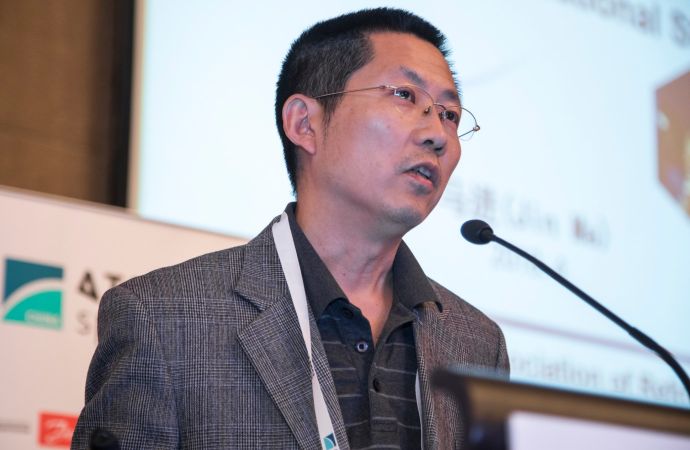Tracing the growth of natural refrigerants through the first 100 issues of Accelerate magazines from around the world

Jin Ma from the Chinese Association of Refrigeration believes a change in the mindset of Chinese industry is key to unlocking opportunities for NatRefs in China.
This is Part 6 of a six-part series detailing how the use of natural refrigerants has grown around the world, taken from the cover story of the June 2019 edition of Accelerate Magazine.
While China lags far behind Japan’s aggressive adoption of natural refrigerant systems, it is increasingly recognizing the opportunities available today.
Technology advancements are being made by both overseas and local technology suppliers. For example, at China Refrigeration 2018, Japanese OEM Panasonic unveiled its first CO2 transcritical rack for the Chinese commercial food retail market.
Panasonic’s transcritical CO2 system was installed in July 2018 at a new store in Beijing operated by local Chinese retailer CSF Market. The system was the second transcritical CO2 system to be installed in China, following one at a METRO AG store in Beijing in 2017.
Last year, a number of transcritical CO2 systems began to be exhibited at major exhibitions. At ChinaShop 2018, held last November in Kunming, China, Chinese OEM Zhejiang XingXing Refrigeration launched a transcritical CO2 rack system aimed at the Chinese food retail market.
At the same time, Chinese OEM Kunming Dongqi Technology revealed its own newly developed transcritical CO2 system for the Chinese market.
At China Refrigeration 2019, along with Beijer Ref’s transcritical CO2 rack and Panasonic’s 80 HP CO2 rack, transcritical CO2 systems were displayed by local manufacturers Shenzhou and Cryotek.
China is also making progress on the hydrocarbons front. Last year, eight major Chinese room air-conditioner manufacturers committed to selling 220,000 R290 units in 2019.
Return to Ammonia?
But there are obstacles as well. In the industrial sector, ammonia has been shunned since major accidents took place in 2013. But recent developments point towards a return to the highly efficient natural refrigerant.
Industrial refrigeration expert Jin Ma, who is deputy director of the Cold Storage and Cold Processing Committee at the Chinese Association of Refrigeration, sees a resistant mindset on the part of the government as the biggest barrier to further adoption of ammonia and CO2 technology in China’s fast-growing cold chain sector.
“I believe that the refrigeration and air conditioning industry will continue to grow in the future,” said Ma in a recent interview. “Sustainable technology is really important for this industry. However, the main barrier in China, I believe, will not be with the technology but with the mindset.”
“If end users can show the government that, though ammonia use does entail legitimate safety concerns, they can be easily managed with proper standards and training, then progress in China can be made.”
This is Part 6 of a six-part series detailing how the use of natural refrigerants has grown around the world, taken from the cover story of the June 2019 edition of Accelerate Magazine.
All posts in the series:
Part 1: NatRefs 101Part 2: Europe – Leading the World
Part 3: North America – Steady Growth, Despite Policy Setbacks
Part 4: Australia & New Zealand – Cutting Costs Down Under
Part 5: Japan – Eco Cute and C-Stores Lead NatRefs Growth
Part 6: China – NatRef Opportunities Abound
Related stories



